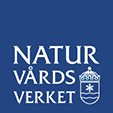Dataset type
This dataset that contains primary occurrence data for species.
Description
The national wetland inventory (VMI) has for 25 years made inventories of Swedish wetlands that are situated below the mountain range. Wetlands have been defined in VMI as: "Land where water, for a large part of the year, is close to, in or above the ground, as well as vegetation-covered water areas. At least 50% of the vegetation should be hydrophilic, i.e. moisture loving, in order for it to be called a wetland area. An exception is sometimes dry-laid bottom areas of lakes, seas and streams. They count as wetlands even though they lack vegetation. "
In total, VMI has invented 35,000 sites with a total area of 4.3 million hectares, which corresponds to 10% of Sweden's total land area. The purpose of the inventories has been to create a knowledge bank over the country's wetlands, which can be used for environmental monitoring and natural resource planning. By examining how and in what range wetlands are affected by human activities and by identifying valuable wetlands, their values can be preserved for the future. Inventory data was also planned to provide a basis for the authorities' handling of e.g. land drainage and logging.
For practical reasons inventories has only been performed at larger wetlands below the mountain ranges. In northern Sweden inventories took place at all wetlands larger than 50 ha and in all wetlands in southern Sweden wetlands larger than 10 ha. All inventoried wetlands have been analyzed with aerial photos and remote sensing and has been classified according to the status of the nature values. A total of 12% of wetlands have also been visited in order to provide further knowledge. Based on the remote sensing, all wetlands were classified into one of the 47 different wetland types. Based on the spatial extent of wetland types, we have divided Sweden into five different marsh/bog-regions: Fell bog, Palsa bog, String bog, Raised bog and Pine bog/Beach wetland bog.
The results of the VMI are regularly used by county administrative boards and municipalities and have been an important tool for national protection of wetlands. The regional inventories have been made by the various county administrative boards and the Swedish Environmental Protection Agency has acted as coordinator for the project.
The digital data contains the delimitation of the VMI areas, a central coordinate and an ID (LOID). Via ID, you can extract data from access databases with information about species inventoried. More information on the project can be found at http://www.naturvardsverket.se/Om-Naturvardsverket/Publikationer/ISBN/5900/978-91-620-5925-5/.
Geographic Description
Covers Sweden
Type of content
Includes: Point occurrence data.Citation
No citation information available.
Rights
To the extent possible under law, the publisher has waived all rights to these data and has dedicated them to the Public Domain (CC0 1.0). Users may copy, modify, distribute and use the work, including for commercial purposes, without restriction.
Digitised records
Looking up... the number of records that can be accessed through the Swedish Biodiversity Data Infrastructure. This resource was last checked for updated data on 28 Nov 2025. The most recent data was published on 24 Mar 2023.
Metadata last updated on 2025-11-28 08:44:29.0
Loading...



